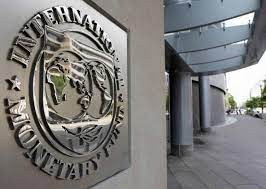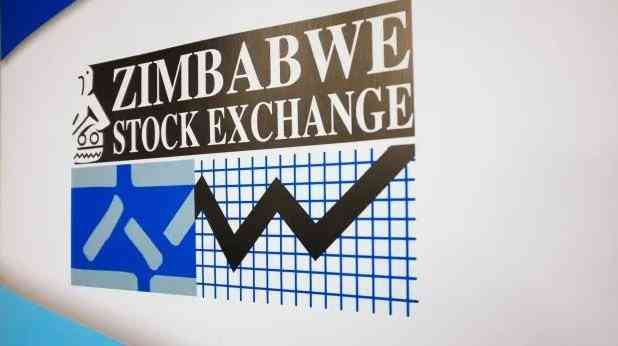
IS the world facing the crisis of resources or is it facing the crisis of sharing?
The question may seem ironic or provocative, but it remains one of the most controversial questions in the realm of sustainable development.
The financial resources in this modern era are distributed through the global financial architecture, which refers to the governance arrangements that ensure the stability and functionality of the global monetary and financial systems.
There have been growing calls for the reform of the global financial architecture, as it was designed in 1945, a time when climate change and social inequalities, including gender inequality, were not considered major development challenges.
The current global financial architecture was developed by and for industrialised countries, hence its design is the basis of its fundamental deficiency.
In its current form, the global financial architecture consists of a multi-faceted framework of institutions, agreements, rules, and practices that govern its operations.
At the heart of the global financial architecture are Bretton Woods institutions, the International Monetary Fund (IMF) and the World Bank, which collaborate with numerous regional development banks.
Additionally, informal and formal groupings, such as the G7 and G20, and international norm setters, including the Organisation for Economic Cooperation and Development, World Trade Organisation, and United Nations, are represented in the global financial architecture.
- Africa calls for an effective global financial safety net
- Reforming global financial architecture
Keep Reading
Economic policies, capital flows, trade, and financial transactions are all influenced by these actors globally. There is a range of freedom and independence among these stakeholders, with some occasionally making unilateral decisions and collaborating on certain matters.
The global financial architecture has become progressively unsuitable for the current era, which is marked by unrelenting climate change, escalating systemic risks, inequalities, and conflict-related emergencies.
The current global financial architecture is marred by inefficiencies and gaps, which include higher cost of borrowing for developing countries, particularly those in the Global South.
Africa will require US$1,3 trillion annually to fund its Sustainable Development Goals by 2030, according to the United Nations. However, numerous African nations are unable to obtain concessional financing due to their debt burdens (some inherited from colonial governments, for example Zimbabwe and South Africa).
The other reasons, include high debt servicing costs, highly exaggerated default risk of African countries, as well as the distortion of international trade rules resulting from internal or export subsidies implemented by developed countries, or border tariffs that penalise African exports.
Africa’s growth and development agenda are impeded by insufficient resources, which are further exacerbated by insufficient climate finance in the face of escalating environmental threats.
Africa is disproportionately affected by climate change, despite the fact that it contributes only 3% of global carbon emissions.
Nine of the world’s 10 most climate-vulnerable countries (Chad, Central African Republic, Eritrea, Guinea-Bissau, Democratic Republic of Congo, Sudan, Niger, Afghanistan, Liberia, and Somalia) are located in Africa, as per the Global Climate Vulnerability Index 2022.
Nevertheless, Africa receives a lower amount of climate funding than any other region in the world. Africa is currently confronted with annual losses that are astronomical, ranging from US$7 billion to US$15 billion and by 2040, it is anticipated that these losses will increase to US$40-50 billion.
Another inefficiency of the global financial architecture is the disproportionate access to liquidity by countries during a crisis.
As evidenced by the US$33 billion or 4,5% of the US$650 billion Africa received in Special Drawing Rights (SDRs) issued by the IMF, the continent’s plight is exacerbated by the inequitable distribution of global financial resources in favour of rich countries, which are the countries that require them the least.
This is also demonstrated by the unequal budgetary responses to aid developing countries during crises such as the Covid-19 pandemic. Africa received only US$89 billion, or 0,5%, of the total US$17 trillion budgetary response to the pandemic.
A significant gap in the current architecture lies in its governance systems. Developing countries are significantly underrepresented in the global financial architecture, with some developing countries having veto power in decision-making institutions that are in this architecture such as IMF and the World Bank.
The distribution of SDRs requires 85% of votes and United States of America (US)’s 16,2% in IMF are enough to block the distribution of these SDRs.
The overrepresentation of developed countries was illustrated in the case of Zimbabwe as seen by Section 4 (c) of the Zimbabwe Democracy and Recovery Act, enacted by the US, whose aim is to block multi-lateral banks and financial institutions from extending loans, grants and financial aid to the government of Zimbabwe.
The veto power of developed countries also extends to regional multilateral development banks. In terms of shareholding structure of the African Development Bank (AfDB), 54 African countries hold 60% of the total shareholding whilst the remaining 40% is held by the 27 non-African countries.
The US is the largest non-regional shareholder (6,6% shareholding) and there have been allegations that the country is arm-twisting the bank’s Board of Governors to change the leadership as noted by African Diaspora Congress.
From the shareholding, it implies that the only African thing about AfDB is its name hence the bank structure is modelled after the Bretton Woods Institutions and is referred to as the poor man`s replica of Bretton Woods Institutions.
Until the norms and practices of global economic and financial governance allow developing countries to access substantial resources on sustainable terms, the financing issue will remain unresolved.
Africa is at a substantial disadvantage due to the current global financial framework hence calling for true pan-African leadership, which makes Africa a rule maker and not a rule taker.
African countries need to take active leadership, particularly on reforms that lead to debt cancellations for debt distressed countries.
The debt cancellations should be accompanied by reforms in international trade and aid conditionalities in order for Africa to have meaningful sustainable development.
In addition, there is need to push for governance reforms that allow more African countries to participate in the global financial architecture.
The objective is to have fair and inclusive representation in the decision making bodies accompanied by improved access to finance, and making Africa a rule-maker and not a rule taker.
Banda is a pan-African economist and policy analyst, lecturer and member of Zimbabwe Economics Society. These weekly articles are coordinated by Lovemore Kadenge, an independent consultant, managing consultant of Zawale Consultants (Pvt) Ltd, past president of the Zimbabwe Economics Society and past president of the Chartered Governance & Accountancy Institute in Zimbabwe. — kadenge.zes@gmail.com or mobile: +263 772 382 852.










